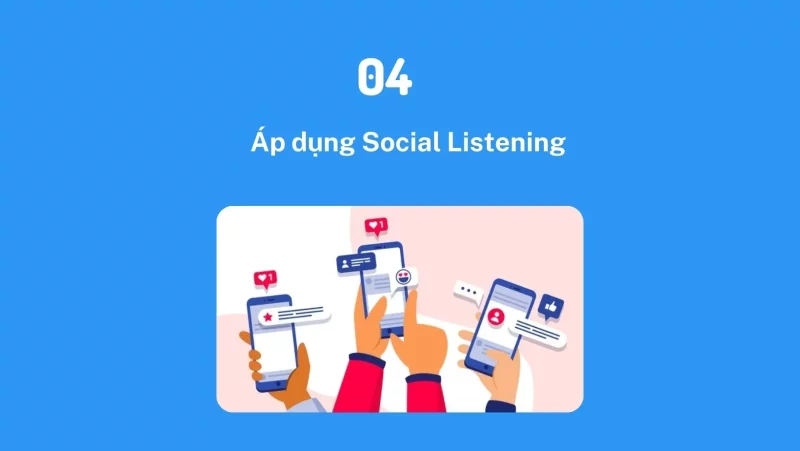When identifying customer pain points, businesses can understand their customers better, thereby gaining a competitive advantage and building appropriate business and marketing strategies.

To be able to convince customers, determining the customer’s pain points is important. When recognizing the pain points that customers often encounter, businesses can develop suitable products to solve those pain points as well as deploy Marketing campaigns to hit customers’ pain points more effectively.
So what are pain points ? How to effectively identify customer pain points?
Join us to learn in detail about customers’ pain points through the article below.
What are pain points?
According to Wikipedia , pain points – Customer pain points are a term in Marketing that refers to specific problems that a current customer as well as a business’s potential customers encounter throughout their experience journey.
Determining the pain points of current customers is not easy for businesses because each different customer will have different pain points. Besides, not all customers can recognize the pain points they encounter during their customer journey. The important thing that businesses need to do is help customers realize where the problems they are facing are and solve these pain points effectively.
If you identify and understand the pain points of target customers , businesses can improve product features or communication content to boost current customers’ willingness to pay for the product. /services we provide.

4 main types of customer pain points
What are the main pain points that current customers often encounter? Basically, customers’ main pain points include the following 4 types:
Financial pain points
The first common pain point that customers encounter is financial pain points.
For this pain point, customers will have financial problems and have difficulty investing and paying to use the products/services that the business provides.
In fact, there are many products/services whose product pricing exceeds the customer’s ability to pay, leading to the business’s customers having to pay too much and they want to cut costs. there. In addition, customers also want businesses to be able to lower product prices or develop products with similar features but at lower prices.
Some examples of Financial Pain Points include:
- Expensive membership registration fees
- Product usage fees are high
- Lack of price transparency
- Maintenance fees to use the product/service skyrocket after a period of time
Productivity Pain Points
The second main customer pain point is productivity pain points.
For Productivity Pain Points, your current customers are facing the problem that the performance of the products/services provided by the business is not enough to meet the actual needs of customers. This pain point is often related to the fact that the target customer is spending too much time with their current supplier/product/service and they want to save time and use it effectively. more effective.
While prospects want to make the most of their time, productivity pain points get in the way of performing activities optimally. They often face problems related to productivity, comfort and convenience.
Usually, customers often prioritize choosing a product or service that is easy to use and convenient during the purchasing process over a similar product or service that is cheaper but inconvenient to buy.
We can take an example of Productivity Pain Points as follows: Compared to using an oven that takes 5 minutes and an oven that only takes 1 minute to heat food, many customers will prioritize using the oven. It only takes 1 minute to heat food with the purpose of saving time and using time more effectively.
Support Pain Points

The third main pain point that customers often encounter is Support Pain Points.
For this pain point, customers often do not receive the support they need during the purchasing process or when they need advice on problems they encounter. If you do not receive timely feedback, there is a high possibility that customers will switch to using another brand.
Some examples of Support Pain Points can be mentioned as: Business customers are not supported during the product payment process, or are not supported to ship the product home, warranty, or not. Get advice on choosing a product package that suits your financial conditions, needs, etc.
To solve this pain, businesses need to invest more in their customer services .
Customer Service (or Customer Service): is the service that businesses provide to customers in all three stages before, during and after purchase, with the purpose of helping customers have the most positive experiences in the process. how they interact with the business.
Nowadays, Customer Service is not just about using traditional phone switchboards to support customers, but can also take advantage of text messages, emails, and social networks to interact with customers.
In addition, many businesses today have also installed automatic response systems (Chatbots) on their websites and fanpages, so customers can receive support at any time.
When businesses provide good customer service, they feel valued and respected, returning to make future purchases and potentially becoming long-term advocates of the product/service. business services.
Focusing on improving customer service will help businesses effectively resolve customer Support Pain Points, thereby increasing the number of customers and supporters of the business’s products/services.
Basically, there are 7 ways to improve Customer Service as follows:
- Understand the product well
- Maintain a positive attitude
- Solve customer problems
- Quick response
- Create opportunities for customers to self-serve
- Listen actively
- Focus on customer emotions
Read more about how to improve customer service in the article : What is Customer Service & 7 best ways to practice Customer Service
Process Pain Points
The last common customer pain point is process pain points.
Process Pain Points relate to customers having difficulty in purchasing and using products and services. Some business purchasing processes may still be complex and not optimized. In fact, customers will be more likely to switch brands or choose a competitor’s product if they find the purchasing process too difficult and complicated.
Some service industries have these obvious pains, such as: e-commerce platforms, delivery, online services (online shopping, internet banking, online food buying and selling,…)
Examples of Process Pain Points can be mentioned as: The payment process on e-commerce sites is complicated, having to go through many steps to register a purchase account,…

What are the benefits of identifying customer pain points?
After learning about the definition of what pain points are as well as the 4 common types of pain points, the next question is: What are the benefits of determining customer pain points?
In general, identifying pain points brings the following three main benefits.
Identifying customer pain points helps businesses turn customers into loyal advocates
The first benefit of identifying pain points is to help businesses turn customers into loyal supporters.
When recognizing customers’ pain points, businesses need to improve their products, marketing strategies as well as customer services to bring the best experience to customers, thereby turning customers into customers. Effectively support their loyalty as well as encourage them to introduce your business’s products and services to relatives or friends in need.
Identifying customer pain points helps businesses gain a competitive advantage
The second advantage that identifying customer pain points brings is to help businesses possess a competitive advantage over their competitors.
When a business identifies and understands the pain points customers are experiencing, the business will need to improve products, approaches, and marketing processes to minimize customer pain points and let them see that the business’s products/services are the best choice to solve their pain points, from which the business can convince customers to choose their products/services instead of yours. competitor.
Identifying customer pain points helps businesses deploy the 4P Marketing Mix program more effectively
Marketing 4P (also known as marketing mix) is an effective marketing model that helps businesses determine the exact products they need to provide, set appropriate product prices, and build convenient distribution channels. for customers and optimize advertising and product communication campaigns.
Basically, the 4P Marketing model answers the following 4 questions:
- Product: What will the business sell?
- Price: How will the business price the products it offers?
- Place: Where will the business sell its products?
- Promotion: How will businesses promote their products to customers?
Once the customer’s pain points are identified, businesses will need to build the most appropriate Marketing Mix 4P program to help customers solve their pain points. By understanding customer pain points, businesses will price products more appropriately, improve product quality as well as build effective marketing, advertising and communication campaigns.
Read more : What are the 4Ps of Marketing? 6 steps to build the most effective Marketing Mix model
4 most effective ways to identify customer pain points
Understanding the importance of identifying customer pain points, it is time for businesses to start identifying customer pain points.
Businesses can refer to 4 effective ways to identify customer pain points below.
Chat and interview current customers of the business

The first way businesses can apply is to talk and interview their current customers.
Current customers are the customers whose pain points the business has been solving. Therefore, an effective way to identify customer pain points is to talk and ask questions to current customers to better understand the problems that they cannot find in other products and choose our products. enterprise. From there, businesses can draw experiences to apply to potential customers.
Some questions businesses can use to ask current customers include:
- Before using the service, what problems did customers encounter?
- Why do customers use your business’s products/services?
- What are the useful features of the product that help customers solve their problems?
- What makes customers choose to buy products/services from a business and not from competitors?
Chat and interview sales staff

The second way that businesses can use is to chat and interview sales staff.
Due to the nature of their work, sales staff interact with customers every day so they will have relatively good assessments of buyers. They will know what issues customers often care about or what makes customers make purchasing decisions.
So, take the time to talk to the sales team and get information from them.
Below are some questions that businesses can refer to when talking with the sales team to exploit information about customers:
- What types of customers do you often meet?
- What are the main problems customers face?
- What does a customer problem typically involve? (Price, product quality, customer service, purchasing process,…)
- What are the reasons why customers choose to buy from a business instead of a competitor?
Research your opponent’s pain points

Another way to determine your customers’ pain points is to research your competitors’ pain points.
Researching which customer pain points competitors are focusing on solving can help businesses better understand customer profiles in addition to product development.
Businesses can choose to access fanpages, websites, research competitors’ advertising samples to find out the advantages and disadvantages of their competitors’ products, as well as see the main customer pain points that their competitors are using. What is your target, from there, build an appropriate strategy to solve the customer pain points that your competitors are aiming for, and at the same time develop other good points so that your business’s brand has a unique and new color? than.
Social listening

Social listening is also an effective way to identify customer pain points.
Social opinion research, English: Social Listening, is a process of controlling social media channels: Facebook, Twitter, Instagram, LinkedIn, Reddit… to know what customers are saying. What about the company’s brand?
The main job of social listening is to monitor these social media channels, filtering out customer conversations or mentions related to the topic. brand, then analyze to find customer insight and effectively identify customer pain points.
Suppose 68% of user mentions say your product is of great quality, but they want “ABC Technologies Company” to provide free installation service because they feel the installation service fee is quite expensive. . This may cause your business’s potential customers to hesitate in deciding to purchase the product and start looking for alternative product/service suppliers that offer free installation services.
Summary
Identifying customer pain points helps businesses draw customer portraits and understand customers better, thereby devising the right business strategy and marketing strategy.
In this article, we have provided information about pain points such as:
- What are pain points?
- 4 types of customer pain points
- Benefits of identifying customer pain points
- 4 effective ways to identify customer pain points
Hopefully through this article, you can better understand how to identify customer pain points. Happy siblings success!
Refer to some other good knowledge:




